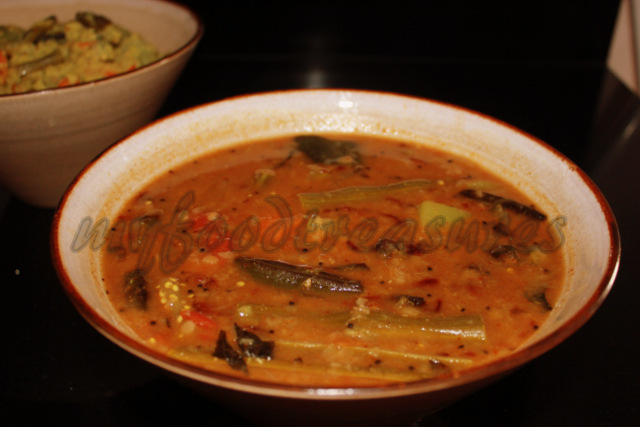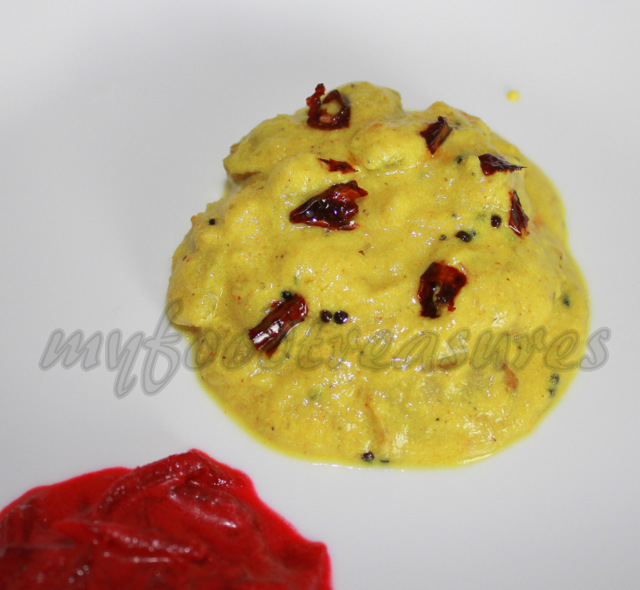An Expats Onam and Kerala Sadya
Onam is a state festival celebrated by people of Kerala in India. My childhood memories of Onam include the Pookalam (flower carpet) that my cousins, sister and I prepared in the frontyard of our houses, the countryside competitions like Bun kadi and Vadam Vali held in the Government school near our Grandfather's house, the Puli Kali where men dressed up as tigers and came jumping around and the Vallam Kali that we saw live on televisions. What interested me more were the Light Kaanal - a walk through the streets of Thiruvananthapuram City amidst brightly illuminated trees, a series of Ganamela at Puthirikandam Maidanam, the cultural art forms of Kathakali, Mohiniyatam and Thiruvathira Kali at Kanakunnu Palace and Sooryakanthi Auditorium and finally the Food Fest and Trade Fair set up in and around Kanakakunnu Palace premises; and all this with our maternal Uncle, who was just 9 years older than me, but always found time away from friends to take us to these festive shows. Being an expat, I miss all these festivities and celebrations.
Thiruvathira Kali
Photo Courtesy: Friendz Melbourne
We, in Melbourne, celebrate Onam with our friends, who are our family here, with dance, skits, songs and games. We all, together, recreate the festive mood that we cherish from our childhood days. It is a doorway for our children to their traditions and culture. Though it is not complete in all fairness, we do the best we can - a tailored Onam celebration in a foreign land. What does remain unchanged is the Sadya - a myriad of traditional curries, rice and dessert (but more often the ingredients of these curries are substituted with locally available ingredients).
Children preparing Pookalam with flowers and leaves available at the onset of spring
Photo Courtesy: Friendz Melbourne
Sadya is a treat of flavours. It literally translates into a complete plentiful meal. It is complete because of the balance of carbohydrates, fibre and protein and plentiful with it mixture of salty, sour, bitter, hot and sweet tastes. Traditionally, Sadya is a vegetarian meal consisting of 30 - 31 items, served on a banana leaf over a mat on the floor. People are also seated on the mat with the banana leaf in front of them. The meal is enjoyed by hands. The vegetable curries are mostly cooked in coconut oil, with coconut, both fresh and roasted and some use yoghurt, buttermilk and coconut milk as well.
Friends enjoying Sadya
Photo Courtesy: Friendz Melbourne
Though Sadya is a vegetarian meal, non-vegetarian dishes also find its way into the menu based on region and religion. In a Christian household on the coastal side of Kerala, the Kootu Curry is usually replaced with a fish curry. In fact, my Grandmother has a special fish curry that is prepared only for Onam. Also, in North Kerala, in a Muslim household this would be replaced by chicken/ mutton curry. I once heard that they even served biryani for Onam. (All this is based on information I've received from people with whom I've been acquainted with and will not be true in every case.)
The Art of Serving and Eating Sadya
Serving Sadya is an art in itself. "Thoosanila" is placed in front of the person, with its tapering end on their left side. Serving should start from bottom left of the leaf. Pappadam is served on the extreme left with a banana on its side. Then salt, sarkara varatti and banana chips are served. After this lime pickle, mango pickle and ginger pickle or puli inji is served. On the right Aviyal, Thooran and Mizhukku Puratti is served followed by Erissery, Kootu Curry, Olan, Pachadi, Kichadi, Kurukku Kalan and Madhura Curry. Rice is usually served on bottom right of the banana leaf.
Kerala Sadya
Now comes the art of eating Sadya which helps in easy digestion of this heavy meal. At home, we would enjoy sadya at leisure, taking curries as and when it pleases us. I learnt the art of eating sadya only when I was in Grade 11, when I attended a Hindu wedding with my best friend FS, who guided me through the "process".
While you are waiting for rice to be served, start munching on chips and sarkara varatti. Rice is served on bottom right of the leaf. Divide rice into 3 parts. Parippu Curry is served on first part of the rice with ghee which can be savoured with half a pappadam. Take a break in between to enjoy thoran, aviyal, mizhukku puratti and erissery. Next sambhar is served on the second part of rice which is enjoyed with another half of the pappadam. Take a break to relish pachadi, kichadi, olan and kurukku kalan. This course is usually finished off with madhura curry which refreshes your palate and prepares it for the next course of desserts. Desserts could be two to three payasams/ pradhamans. First Ada Pradhaman is served which is mixed with mashed banana and pappadam. This is followed by Pal Payasam served over boli. This will generally be followed by a sarkara payasam which will not be as sweet as the first and second course of desserts. And when you think you are done, comes pulissery served on the third part of rice with some extra olan. This is followed by sambharam and rasam, which helps in digesting this heavy meal. It is also recommended to finish off your sadya with one of this instead of water.
You are so full now that you simply want to lie down and go to sleep. Na, na! Going for a long walk is the best thing that you can do to yourself. ( Serving sadya is different in different parts of Kerala. The one I've described here is the Thiruvananthapuram Sadya. I should thank DH and her mother for correcting and confirming with me the Thiruvananthapuram style of serving sadya).
I did my best this year to prepare a Sadya with sixteen curries and three desserts. The last time I prepared a complete sadya at home all by myself was in 2007 and this year I did it only for this post. While I was contented with having prepared a complete sadya, the delight of getting together with friends and family to enjoy sadya was completely lacking. I just can't wait for August 29, when we will all celebrate Thiruvonam together.
Please follow the links below to see the recipes. The recipes are not completely traditional because of the non-availability of original ingredients in Melbourne and with my busy everyday life, I usually follow short-cuts for my recipes but I promise you that I haven't compromised on tastes. Also, I haven't mentioned the preparation time and cooking time for any of the curries below because I was working in parallel on most of these curries. Except for ginger pickle and boli, which I prepared the day before, I finished preparing this Sadya in 5 hours.























Great work dear....
ReplyDeletejannet....great job...keep going..happy onam in advance to u and ur family.
ReplyDeleteGood work my dear
ReplyDeleteGreat work Jannet..the blog is too appealing..all the best.
ReplyDeleteThank you girls....
ReplyDeletedear,this was my reference for ona sadya..kidilam...now u r famous in my circle as well!!!
ReplyDeleteThank you very much for the compliments di...
DeleteThere are so many features of this holidat that draws me more to it... The beautiful pookalam, delish recipes and all, the dances... so beautiful! Happy onam to all! Nice post, thumbs up :)
ReplyDeleteI so love the dishes in Onam sadya! They are all looking so yummy and tempting! I'd love to dig in to a one whole feast like that. So mouthwatering!
ReplyDeletehappy 2016 onam images
ReplyDeleteonam wishes messages
onam wishes malayalam 2016
onam greetings cards 2016
onam wishes 2016 quotes
onam sadhya 2016
onam greetings messages 2016
onam 2016 ashamsakal
onam 2016 wallpapers
onam wishes 2016 malayalam
advanced onam 2016 wishes
onam wishes in english 2016
onam wishes images 2016
onam 2016 pookalam images
happy onam wishes 2016
onam images 2016
thiruvonam 2016 images pictures
onam proverbs in malayalam
onam greetings 2016
onam sms wishes 2016
onam scraps photos 2016
onam quotes messages 2016
Các điệu múa rát tuyệt vời, mời các bạn tham khảo thông tin >>> Chia sẻ cho bạn biết nên niềng rang cho trẻ lúc nào là thích hợp ?
ReplyDeleteThe blog explores the vibrant tradition of Onam, a major festival celebrated in Kerala, India. Central to the celebration is the onam sadhya near me, a grand vegetarian feast served on a banana leaf. The Sadya features a wide array of dishes, including rice, curries, pickles, and desserts like Payasam. The blog emphasizes the cultural significance of this meal, the meticulous preparation involved, and the communal aspect of sharing it. Detailed descriptions of the various dishes and their preparation methods are provided, offering insights into the rich culinary heritage associated with Onam.
ReplyDeleteYour Onam Sadya post is fantastic! The vibrant dishes and cultural significance truly highlight Kerala’s rich culinary heritage.
ReplyDelete